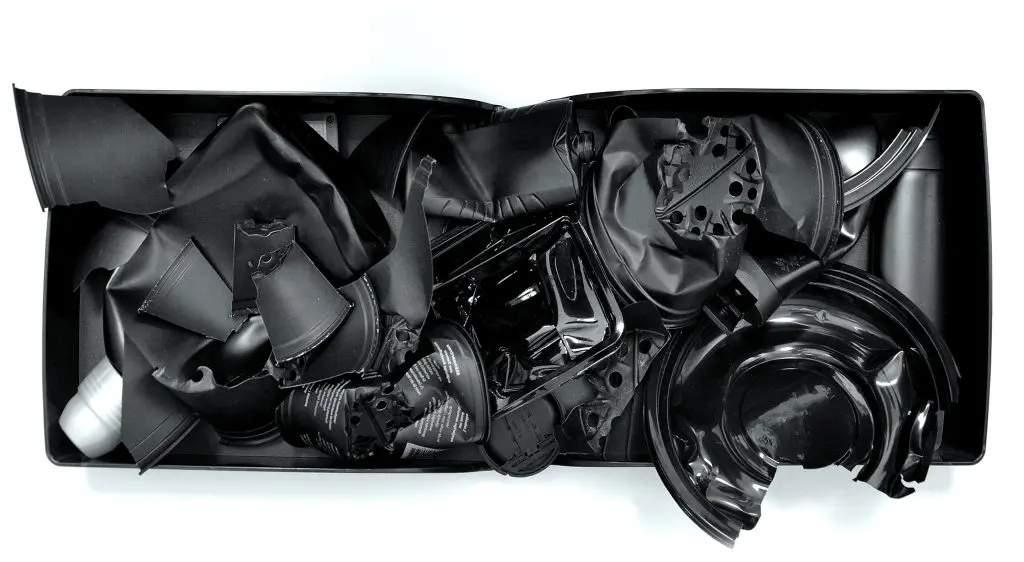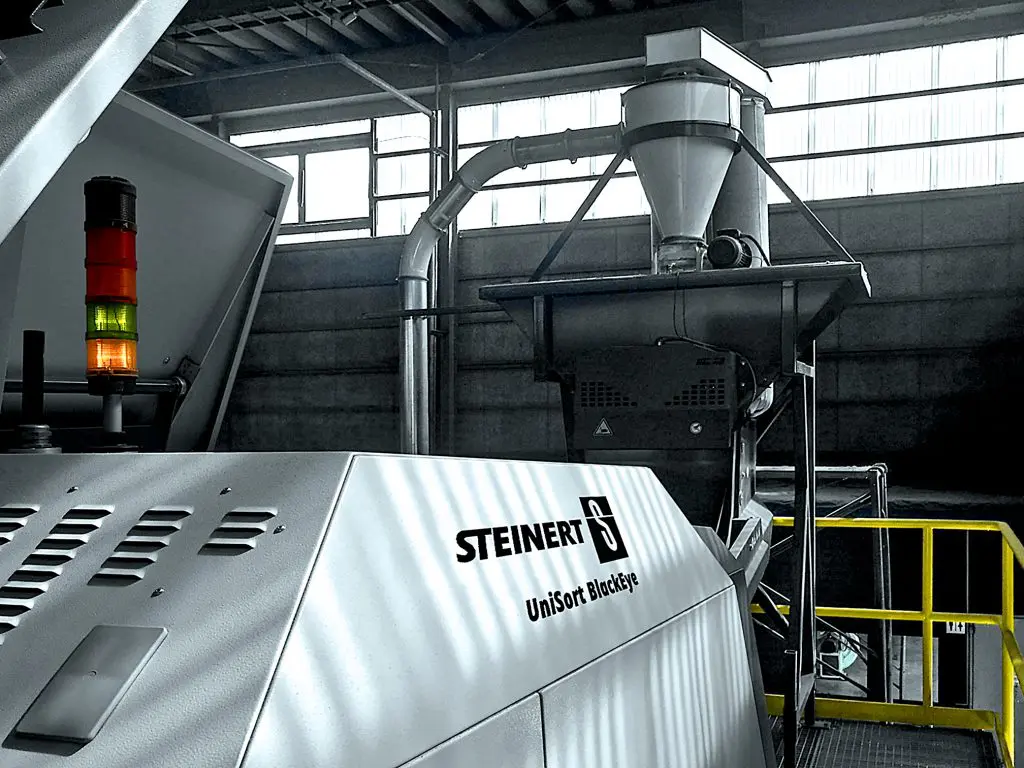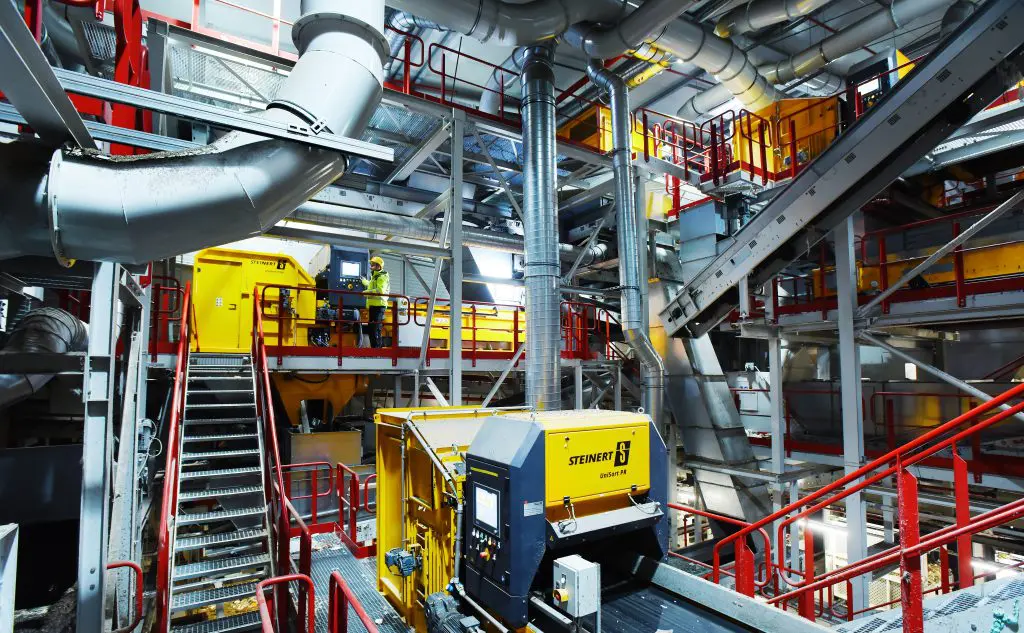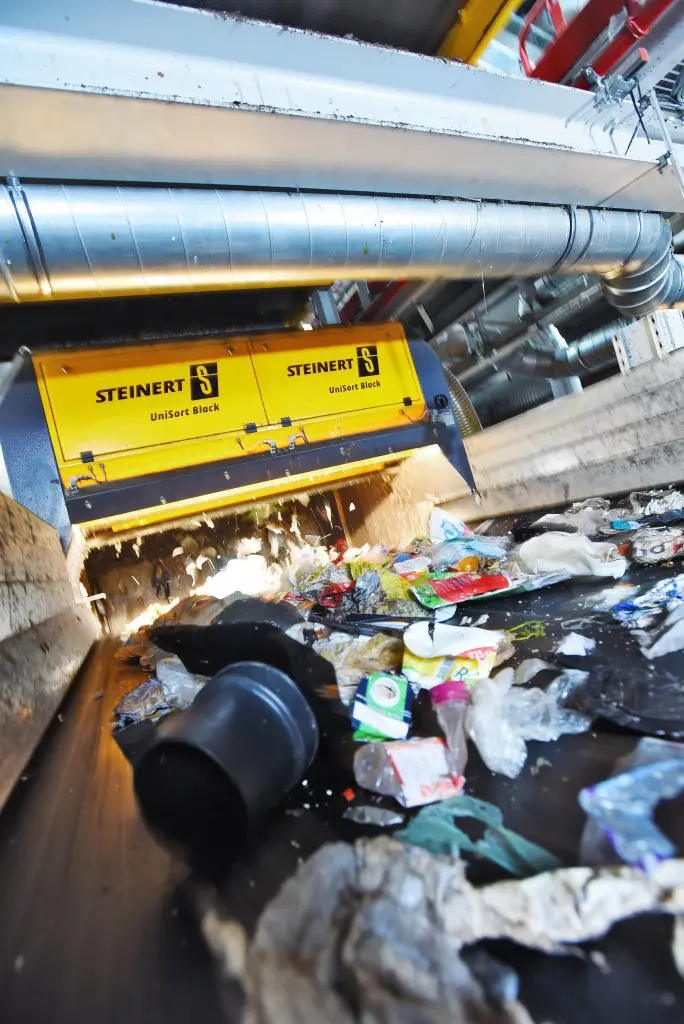Black plastics represent a particular recovery challenge because they cannot be detected with the optical sorting technology found in standard recycling plants. However, Steinert technology allows such plastics to be sorted from the general waste stream into pure grades.
This enables partners of the sorting specialist to respond to the challenges of the circular economy in a cost-effective manner and to be equipped for all the processes involved in plastic recovery and processing.
Near-infrared (NIR) technology is used in recycling plants to identify which plastics can be recovered. Typically, optical sensors use light reflection to register the material and separate it into its valuable fractions. However, the dark colouring of black plastic packaging means that light reflection is reduced to a minimum, so the material cannot be correctly identified or sorted by standard optical sensors.
256 measuring points
Steinert has spent years working on detection for such highly demanding sorting applications. The launch of the UniSort PR saw the adoption of what is known as Hyper Spectral Imaging (HSI) technology, which supersedes the point-to-point scanners previously usually used and, thanks to its finer resolution, covers 256 rather than the usual 16 measuring points in the spectrum. It can evaluate even the slightest differences in the chemical composition of the materials being processed.
In 2014, Steinert employed it UniSort Black technology to be the first company to be able to detect and therefore positively sort black plastics. This improved recycling rates and reduced the residual fractions going to incineration. In 2015, Steinert launched UniSort Film, a conveyor belt technology for high-performance 2D sorting at 4.5 metres per second. Together with UniSort Black, this remains the only machine available today for sorting black film.
At the same time, initial testing was underway on UniSort BlackEye, the world’s first machine for pure-grade detection and sorting of black polyethylene (PE), polypropylene (PP). It has been used around the globe since 2016. UniSort BlackEye is the most recent iteration of Steinert’s HSI technology, which it has been consistently refining since 2011.
Pure-grade separation
Plastic-processing companies in particular can benefit from Steinert products and replace polymer granulates with mint-condition recyclates. Even black polyolefins (PO), which are hard to recycle, can be sorted into fractions such as PE, PP, polystyrene (PS) and acrylonitrile butadiene styrene copolymers (ABS) to a level of quality approaching primary plastics.

UniSort BlackEye allows plastic waste containing a high proportion of black to be separated on an industrial scale. It can then to be upgraded to a plastic granulate with properties similar to those of the primary raw material to be used in the manufacture of durable, quality products. This procedure means that, today, a significant percentage of new plastics can be replaced with recycled materials, thereby saving hundreds of thousands of tons of CO2 every year.
Germany’s largest site relies on NIR
In addition to working with the plastic processing industry, Steinert also provides disposal companies with solutions for their sorting tasks and combines it with over 130 years of process know-how. For example, Steinert enables the Germany’s largest approved single site for post-consumer packaging to respond to tighter packaging legislation which came into force at the start of the year and to increase the proportion of pure-grade plastics which can be recycled.

‘Our partnership with Steinert has been intensive and the right resources were put in place to affectively handle the challenging task we faced. We quickly achieved our goals. We managed this by gathering together our strengths and so achieved rapid progress,’ says Christian Hündgen, general manager at Hündgen Entsorgung.
A key role in this progress was played by Steinert’s UniSort series, the UniSort Black variant of which separates not only materials which can be detected using near-infrared (NIR) technology but also dark and black objects. This increases recycling rates and therefore significantly reduces the residual fraction going to incineration.
‘A complete success’
The innovative UniSort Film conveyor technology is also used to detect and sort 2D objects. Because these objects tend to float off the belt at higher speeds, clever air flow technology on the belt and in the hood provides a solution, allowing flat and lightweight materials to be sorted in a cost-effective way for the first time.
‘Both of these technologies have been developed by Steinert and implementing them has enabled us to offer a better sorting depth and achieve better results. At the same time of course this also improves our product quality. On a personal level this project has been a complete success,’ Hündgen adds. It has also been recognised as a highly resource-efficient project by the Resource NRW Initiative.
New technologies don’t just increase the cost-effectiveness of sorting plants by improving recycling rates – they also offer improved maintenance. In particular, the interaction between dynamic calibration and the automatic white balance in the Steinert UniSort series makes for greater ease of sorting coupled with straightforward maintenance, ensuring that the technology is available at all times.
In all, 95% of plant adjustments are undertaken by remote maintenance while regular software updates guarantee performance, process reliability and a high level of adaptability at all times.
Visit Steinert at the K Show (16-23 October) in Düsseldorf, Germany at booth B23 in Hall 9.
Don't hesitate to contact us to share your input and ideas. Subscribe to the magazine or (free) newsletter.




